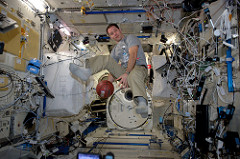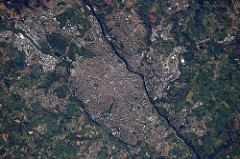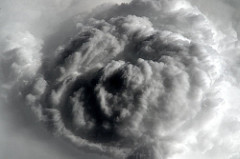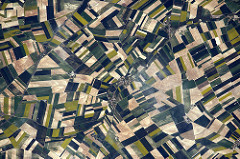Thomas Pesquet posted a video:
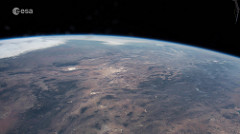
A timelapse flight over a cloudy part of the world, spot the International Space Station radiators top-right? Like our solar panels they move with us to keep our systems and the inhabitants inside at optimal temperature. They circulate ammonia, a toxic substance but very good at exchanging heat given off by our electical systems. It works like a car radiator or a refrigerator, but uses heat radiation instead of convection to keep cool. In space, sunlight warms very quickly, but the shade is very cold: varying from -100°C to +100°C. The goal is to keep the solar panels in the sun and the ammonia radiators in the shade. We have the temperature set at a constant 23°C – except when certain people are on board and complain about how cold it is… it has been raised to 25°C before, true story!
If you know that the Space Station always flies from west to east you can roughly know which way the camera was pointing in each timelapse... in this case: south!
Le système de refroidissement de la Station s’invite dans ce timelapse au-dessus d’une mer de nuages. Il maintient la température aux alentours des 23°C - on monte à 25°C quand l'ISS accueille des astro0nautes italiens qui se plaignent du froid...! On y fait circuler de l’ammoniaque, très toxique mais aux capacités calorifiques élevées, et ils permettent, exposés au vide de l’espace, de dissiper la chaleur accumulée par les systèmes électriques, à l’intérieur de la Station. Comme un radiateur de voiture, ou l’arrière d’un frigo où du fréon circule, mais avec un principe d’échange de chaleur différent (par radiation, et non par conduction ou convection). À noter que dans l’espace, dès qu’on est au soleil il fait très chaud, et dès qu’on est à l’ombre il fait très froid : de +100 à -100 °C environ. Le principe est donc de maintenir les panneaux solaires le plus possible au soleil, et les radiateurs le plus possible à l’ombre…
Credits: ESA/NASA
GMT111_17_20_
